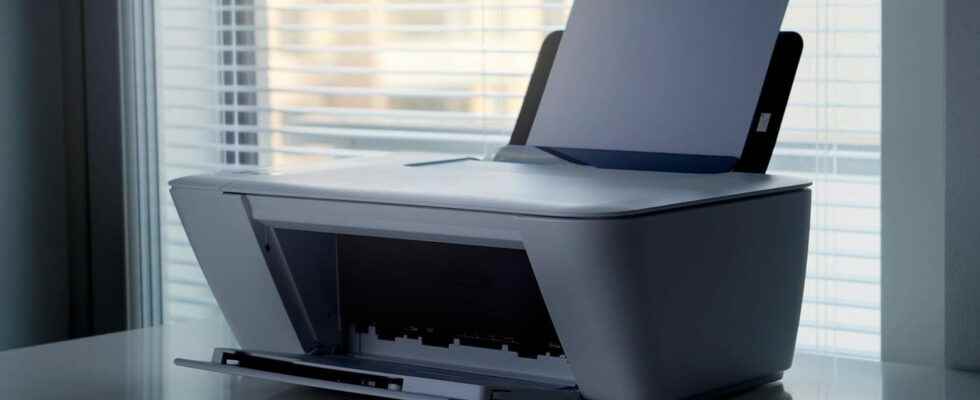Inkjet is the most affordable and widespread technology in the world of personal printing. Well established since its invention several decades ago, this technique consists of projecting microscopic drops of liquid ink onto paper. It is very logically found at the heart of the majority of consumer printers sometimes sold below 50 euros.
Many models available in the market are of the multi-function type. It is thus possible to print, scan and even photocopy documents without going through a computer. Some business-oriented models still have a fax function, although the use of this technology is now obsolete. This “all-in-one” solution remains more affordable than buying separate hardware. However, single-function printers are a good alternative for specialized use, such as photo printing or printing in A3 format.
However, it is not easy to make the right choice when faced with the multitude and variety on offer. Especially since the relative importance of the different criteria depends enormously on the uses, some favoring speed, others quality, still others the cost of use or ease of use.
Thus, the print quality depends largely – but not only – on the resolution, a characteristic which is expressed in dots per inch (p/p, dpi or dpi according to the documentation) and which indicates the quantity of elementary dots printed per line. In theory, the higher the resolution, the better the print quality. However, this is not an absolute guarantee. Many models display resolutions higher than 1000 dpi while all magazines are printed in 300 dpi. In practice, 150 dpi is sufficient for text, and 300 dpi for documents combining text and images. Resolutions of 600 dpi or higher are especially useful for “line” drawings (for architectural plans or industrial drawing, for example).
On the other hand, on multifunction models, the resolution of the scanner part is higher. Also expressed in points per inch, it corresponds to the fineness of the analysis: the higher it is, the better the document will be analyzed, and the better the quality of the digitization, for images as for texts.
Throughput is the speed of a printer. It indicates the number of pages that can be printed in a given time and is expressed in pages per minute (p/min or ppm). But it is very often exaggerated by manufacturers and sellers and only rarely corresponds to reality. Especially since it depends on the quantity of images and text contained on each page and it does not always take into account the time taken to start up the printer and the time for processing the pages… test in a real situation, it can only be considered as an approximate and relative indicator, the hierarchy of speeds announced being more or less respected.
Other more practical aspects, on the other hand, should really be taken into account: the capacity of the paper input tray(s) – to avoid too frequent refills –, the types and sizes of paper accepted – heavy weights not being not always supported – the double-sided option – automatic being more comfortable – the presence of a screen, sometimes useful for controlling the printer, compatibility with operating systems, or even interfaces available – USB, Wi-Fi, Ethernet, Bluetooth. This point is also essential when you want to share the printer within an office or household: it is necessary to favor a network model, preferably wireless, to print from several computers or even from a smartphone or of a tablet. Fortunately, almost all current multifunction printers are Wi-Fi compatible. And often even Wi-Fi Direct, a function that allows you to print directly from a mobile or computer, without having to connect to a local network.
But, in addition to reliability, which remains impossible to determine in advance, the essential criterion remains the cost per page, and therefore the price of consumables, namely the ink cartridges. It is moreover with this essential “fuel” that the manufacturers make the most margin, in particular on printers sold at very low prices, which sometimes cost less than their set of cartridges! Original cartridges are often expensive, which represents a budget that should not be overlooked. It is essential to find out about their price before buying. And to check the existence of quality compatible cartridges on online sales sites, even if the manufacturers do not recommend them and no longer provide the guarantee when they are used. But the game is worth the candle, especially we know that we find on the Internet compatible five to ten times cheaper than the originals for a similar quality. It should however be noted that, for some years, certain manufacturers such as Epson or Canon have been offering models that operate using large capacity ink tanks, which are filled with small bottles. This system is much more economical to use – the cost per page being divided by 10! –, but these models are more expensive to buy and are intended for fairly intensive use over the long term. Note also that several manufacturers such as HP or Epson now offer a subscription system with home delivery of cartridges. A formula supposed to be more economical than buying cartridges individually and on a case-by-case basis.
Beyond the cost, it is essential to examine the solution adopted for the ink: it is better to favor printers using four or five cartridges (including a large capacity one for black, the most used color) rather than a two or three cartridge system (where black is obtained by mixing). Similarly, replacing cartridges is more or less practical depending on the model. But, here again, only a full-scale test can be sure.
